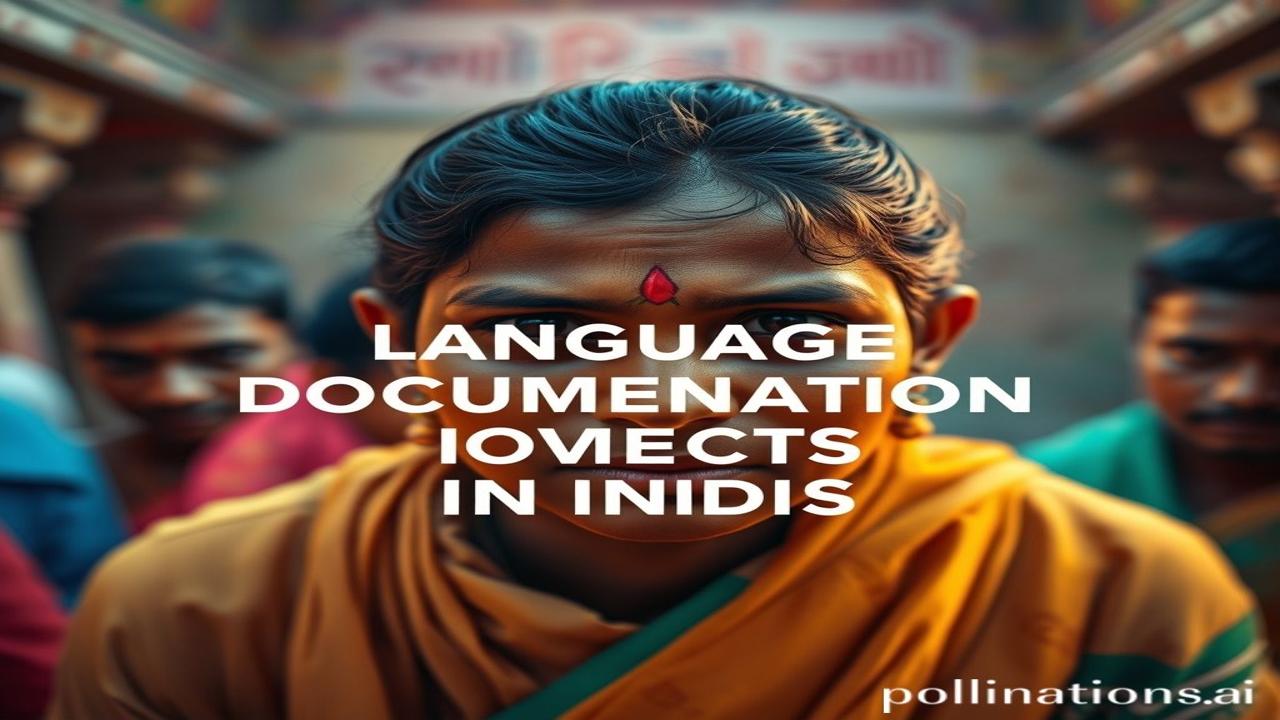Khoi Hui Awaazein: Unearthing India’s Linguistic Treasures Through Documentation Projects
Kabhi socha hai, agar hum apne dada-dadi ki bhasha bhool jaayein, toh kya hoga? Unki kahaniyan, unke sapne, unki zindagi ka saar… sab dhoondhla pad jaayega. India, with its kaleidoscope of cultures, faces this very risk. Many of our ancient languages, the carriers of invaluable wisdom, are slowly fading away. But there’s hope! Language documentation projects are our collective effort to preserve these dhrohars (legacies) before they vanish entirely. Chaliye, explore karte hain is important endeavour ko!
Language Documentation: Saving India’s Linguistic Jewels
What is Language Documentation, Yaar?
Language documentation is like creating a comprehensive “archive” of a language. It goes beyond just writing a dictionary or grammar book. It involves recording speakers, collecting stories, documenting rituals, and creating a repository of all aspects of a language and its culture. Think of it as making a complete film about a language – from its grammar to its daily usage.
When and Why Did This Start in India?
While isolated efforts existed earlier, the real push for language documentation in India gained momentum in the late 20th and early 21st centuries. Several factors contributed:
- Globalization ka Asar: Globalization brought increased contact with dominant languages, threatening smaller, indigenous languages.
- Increased Awareness: Linguists and anthropologists started realizing the urgency of documenting languages facing extinction.
- Technological Advancements: Recording equipment became more affordable and accessible, making documentation easier.
The goal? To preserve our rich linguistic dhrohar (heritage) for future generations. Every language carries a unique perspective on the world, and losing one means losing a piece of our collective human wisdom.
Why Should We Care? Bharat ki Atma Isme Hai
India is a land of anekta mein ekta (unity in diversity). Our languages are the threads that weave this vibrant tapestry. Losing them is like tearing holes in that fabric. Think of it this way: imagine a Mughal painting where the vibrant colors are slowly fading away. Language documentation is like the art restorer, painstakingly preserving each detail.
Zameeni Sach: Log Aur Jeevan – A Glimpse into the World of Language Preservation
Imagine a small village in Arunachal Pradesh. The air is crisp, and the scent of pine needles hangs heavy. Here, an elderly woman named Apang Ama sings a lullaby to her grandchild in the Meyor language, a language spoken by only a few hundred people. A team of linguists, armed with recording devices and notebooks, carefully documents her song.
Apang Ama smiles. “Yeh geet mere dada-dadi ne mujhe sikhaye. Mujhe darr hai ki mere pota-poti isse kabhi nahi sunenge.” (This song was taught to me by my grandparents. I fear my grandchildren will never hear it.)
This is the reality of language documentation. It’s about connecting with people, earning their trust, and capturing their stories before they are lost forever. It’s about understanding their khushi (joy), their dukh (sorrow), and their sanskriti (culture). It’s about giving a voice to the voiceless.
Dharohar Aur Pehchan: Language’s Echo in Modern India
Even today, you can see the impact of past documentation efforts. For example, understanding ancient Sanskrit shlokas and the deciphering of Harappan script relied heavily on linguistic analysis and the preservation of ancient texts. Modern India uses the insights gained from these projects in numerous ways:
- Education: Reviving and promoting endangered languages through school curricula.
- Culture: Supporting cultural performances and artistic expressions that utilize these languages.
- Research: Providing valuable data for linguistic research and historical studies.
- Tourism: Promoting language tourism, where people visit regions to learn about and experience different languages and cultures.
This directly ties into Bharatiyata – the very essence of Indianness. Protecting our languages means protecting our identity, our history, and our collective memory.
Mazedar Tathya Ya Bhram-Bhanjak: Unveiling the Truth
Log samajhte hain ki English bolna hi “modern” hona hai. Lekin asli sach yeh hai ki apni matrubhasha (mother tongue) ko samman dena aur use sikhna bhi उतना ही महत्वपूर्ण है. Bilingualism and multilingualism are assets! Keeping our native languages alive is not about rejecting modernity, but about embracing our roots while reaching for the stars. Also, Did you know? UNESCO estimates that around 196 languages in India are vulnerable or endangered.
Drishya Aur Bhavnayein: Painting the Linguistic Landscape
Imagine walking through the bustling streets of Kohima, Nagaland. The air is thick with the aroma of smoked meat and fermenting rice beer. You hear snippets of Ao, Angami, and other tribal languages mingling with Hindi and English. You see intricate Naga shawls woven with symbols that tell stories of valor and tradition. You feel the vibrant energy of a culture that has survived for centuries, carried on the wings of language.
Antim Vichar Ya Uddharan: A Closing Thought
“Bhasha ek nadi hai, jo kal ko aaj se jodti hai.” (Language is a river, connecting yesterday to today.) Let us all strive to keep this river flowing, ensuring that the voices of our ancestors continue to echo through the ages. Let us preserve our linguistic dhrohar, for it is the very soul of India. Jai Hind!
